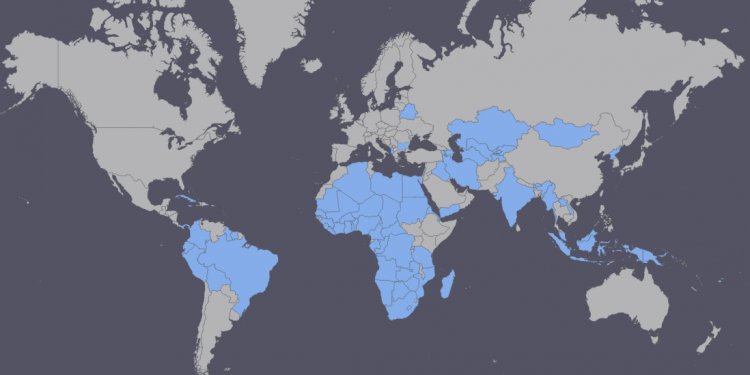According to the World Bank’s recent Migration and Development Brief, remittance to low and middle-income countries bounced back to a record level in 2017 after two successive years of decline.
World Bank estimates that officially recorded remittances to these countries increased by 8.5 percent to $466 billion in 2017 from $429 billion in 2016. Additionally, global remittances including flows to high-income countries increased by 7 percent to $613 billion in 2017 from $573 billion in 2016.
The growth in remittance flows is attributed to growth in the Russian Federation, Europe, and the US. The bounce back in US dollars was helped by the strengthening of the Euro and ruble and higher oil prices.
Remittance inflows grew in all regions with India being the leading remittance recipient with $69. China came second at $64 billion followed by the Philippines at $33 billion, Mexico $31 billion, Nigeria $22 billion, and Egypt at $20 billion.
In 2018, remittances are expected to maintain the momentum by 4.1 percent to reach $485 billion while global remittances are expected to surge 4.6 percent to $642 billion in 2018.
The barriers to longer-term remittances growth are stricter immigration policies in many remittance-source nations, increased regulation of money transfer operators, and de-risking by banks. The last two factors are put in place to reduce financial crime.
Furthermore, the cost of sending remittances is another barrier with the global average cost standing at $200 (7.1 percent) which is higher than the SDG target of 3 percent. Sub-Saharan Africa is the most expensive place to send money is at an average cost of 9.4 percent.
The main barriers to reducing the cost of sending remittances are de-risking by banks and exclusive collaborations between national post office systems and operators of money transfers. These barriers make the adoption of technologies such as the internet, apps, the blockchain, and cryptocurrencies in remittance services much more difficult.
Dilip Ratha, lead author of the Brief and head of KNOMAD said:
“While remittances are growing, countries, institutions, and development agencies must continue to chip away at high costs of remitting so that families receive more of the money. Eliminating exclusivity contracts to improve market competition and introducing more efficient technology are high-priority issues.”
The Brief also notes that transit migrants, who stay in a transit country for a short time, are usually not able to send remittances back home and are susceptible to exploitation by human smugglers during transit. Moreover, the poor population in transit countries competes with transit migrants for low-skill jobs.
“The World Bank Group is mobilizing financial resources and knowledge on migration to support migrants and countries with the aim of reducing poverty and sharing prosperity. Our focus is on addressing the fundamental drivers of migration and supporting the migration-related Sustainable Development Goals and the Global Compact on Migration,” said Michal Rutkowski, Senior Director of the Social Protection and Jobs Global Practice at the World Bank.
Remittances to Sub-Saharan Africa surged 11.4 percent to $38 billion in 2017 with Nigeria ($21.9 billion), Senegal ($2.2 billion), and Ghana ($2.2 billion) recording the highest remittances.
The growth in remittance inflows was attributed by improved economic growth in advanced economies and higher oil prices benefiting regional economies.
Remittances contribute a significant share in GDP in countries such as Liberia (27 percent), Gambia (21 percent), and Comoros (21 percent). In 2018, remittances in Sub-Saharan Africa are expected to increase by 7 percent to $41 billion.




